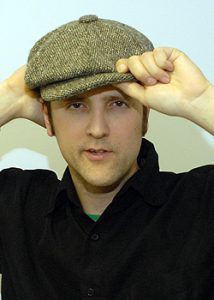
I often wonder what the hell is a matter with Canadians when it comes to sports.
I stand on high school sidelines watching some of the city’s best teams and athletes vie for hardware, only to see a smattering of spectators (if any) in cramped facilities or by fields that look like gophers appreciated an all-you-can-eat buffet.
I also ponder whether or not we’ve been hog-tied by the artsy-fartsy who believe the arts are the only stimuli we need.
Well, here’s a stimulus package for you: Friday Night Lights will satisfy the inner sports fan that burns inside.
East York CI has been hosting their rival Leaside High on the gridiron for five years now.
The annual event is a salute to the Goliaths tradition of playing at Memorial Stadium during the 1950s and ’60s, head coach Glenn Edwards says.
“Certainly Friday Night Lights connects to the tradition of East York Collegiate rather than to any tradition in the U.S.,” he says.
Still, the kind of energy that goes into such an event is doled out on a weekly basis south of the border, professional sports psychologist Saul Miller says.
“When you go through any small town in the United States and you drive by the high school there’s a big sign outside that says, ‘Home of the Vikings’, ‘Home of the Raiders’, ‘Home of the Tigers’, whatever it is, there’s a real sort of martial ring to it,” he said. “It’s much more, I think, in keeping with the military mindset.”
Miller isn’t all talk when he says a healthy dose of competition is good for teenagers. He went all-city on his Montreal high school team and won the Vanier Cup with McGill back in his university days.
“Heck, when I played high school football — and I was pretty good at it — we didn’t get anybody watching us,” he says. “In the States, it is such a phenomenon.”
Some boho-hipster types may raise concerns over competition and pressure being unhip for teenagers.
Miller disagrees.
“You have to learn in this life how to win and how to lose, to compete again and so on,” he says. “As children get older and become adolescents, I think it’s great to compete in a forum where there is pressure.”
However, not to an excessive degree, Miller adds.
I agree.
But in Canada sometimes there isn’t that level of difficulty, says Lawrence Park alum Jordan Glover, as he had to pursue his own baseball career at Eastern Michigan University.
“It was kind of difficult because in high schools in the States, you have tons of scouts or recruiters coming to games,” he says. “I had to go into the States to get discovered and send out letters and videos.”
What impresses Glover most about America’s passion is how communities use sports as a means to socialize.
“I played summer ball in a small town of 5,000 people this summer and there was almost 2,000 people every game,” he says of his Coastal Plains League experience in Edenton, North Carolina.
At the high schools it’s no different.
“The whole town becomes a part of the sports team,” he says. “They live and die by the high school, pretty much.
“In my high school, we would never go and support our football team or basketball team.”
East York is happy to bring the community together through sport.
“It means a huge amount for the players that their friends, the school is out and that their family is there,” Edwards says. “But because it only happens once a year it takes a little longer sometimes to get into that comfort level.”
Only once a year? It’s a weekly to-do for American schools — that is what artistic types would call a muse for Glover.
“If we adapted to the American way it would be awesome,” he says. “It’s a lot more fun playing games if your whole school is cheering for you.
“I think (Friday Night football) is a great idea. Everyone knows when the game is and they can hang out and support their team.”
